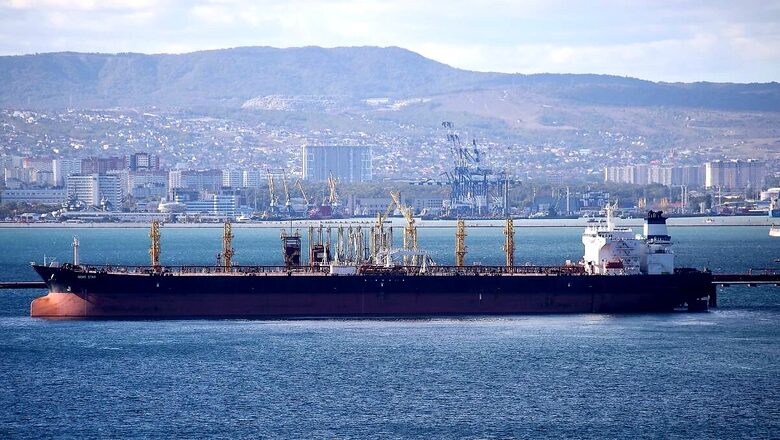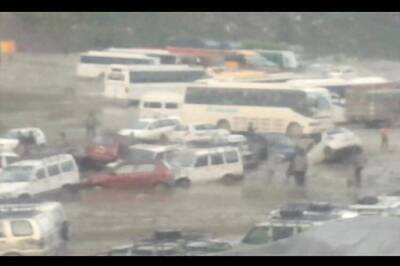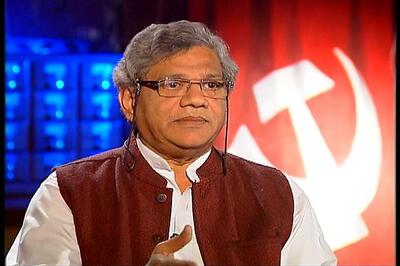
views
Two years after Russia launched a full-scale invasion of Ukraine, prompting multiple rounds of Western sanctions, Moscow increasingly relies on a shadow fleet of ships to circumvent curbs on its oil exports.
Experts say the so-called ghost fleet of tankers with opaque ownership or without proper insurance has allowed the Kremlin to keep exporting despite a Western-imposed embargo and oil price cap on its global sales.
This has heightened concerns over the myriad risks it poses, as well as worries about the continued revenues generated for Russia’s war machine.
In the latest attempt to crack down on the practice, the United States on Friday blacklisted 14 Russian tankers from the state-run shipping company Sovcomflot.
Washington said it had 45 days to offload oil or other cargo from the 14 vessels before enforcement.
The Kyiv School of Economics (KSE) defines a “ghost fleet” as commercial vessels that are neither owned by countries in the G7 coalition with the European Union, or that do not use protection and indemnity (P&I) insurance.
The real ownership of such ships is often difficult to determine, due to the unclear origins of the parent companies and intermediaries used.
– ‘Ever-expanding’ –
The fleet has grown in prominence since Russia was slapped with an oil embargo, a price cap on Russian crude and a ban on providing services to ship oil by sea to stop it financing the war with Ukraine.
In response Moscow has dramatically reduced its dependence on Western shipping services by buying or leasing the shadow tankers and offering its own insurance services.
“Russia’s industrial scale sanctions-evasion programme is growing more complicated and sophisticated,” Lloyd’s List Intelligence warned in December.
This featured “an ever-expanding ‘dark fleet’ of subterfuge shipping and a shadowy network of brass plate companies and middlemen beyond the reach of Western interventions.”.
In its January “Russian Oil Tracker” report, KSE estimated that 196 of these crude oil-loaded tankers left Russian ports in December.
It said UAE-based shipping companies “form the core” of Moscow’s shadow fleet, while the top three flags of its vessels carrying oil are Panama, Liberia and Gabon.
Five new UAE-based shipping firms “with non-transparent organisational and ownership structure” have started to carry the Russian crude without P&I insurance since November, KSE noted.
The cover is essential for commercial vessels facing war risks, collisions or environmental damage such as oil spills.
Some 90 to 95 percent of the P&I insurance market is made up of insurers from the European Union and the UK, both of which have slapped sanctions on Russia.
‘As dark as possible’
KSE said nearly three-quarters of the shadow tankers used by Moscow in December were built more than 15 years ago.
It regularly warns that the ageing vessels pose “huge environmental risks”, in particular for the EU as the poorly maintained ships skirt the coastlines of several European countries.
After several incidents involving the fleet, Elisabeth Braw, a senior fellow at the American Enterprise Institute, wrote on the Politico website last October that it was a major disaster waiting to happen.
“The accidents aren’t just a result of these vessels being old and poorly maintained either,” she said.
Braw noted that to be “as dark as possible” the ships often turn off their automatic identification systems (AIS) — a GPS-type signal that commercial vessels use to avoid collisions — adding extra risk.
“Imagine if the world’s roads were filled with uninsured vehicles that haven’t passed inspections and don’t use their lights — that’s what’s happening on the world’s oceans,” she added.




















Comments
0 comment